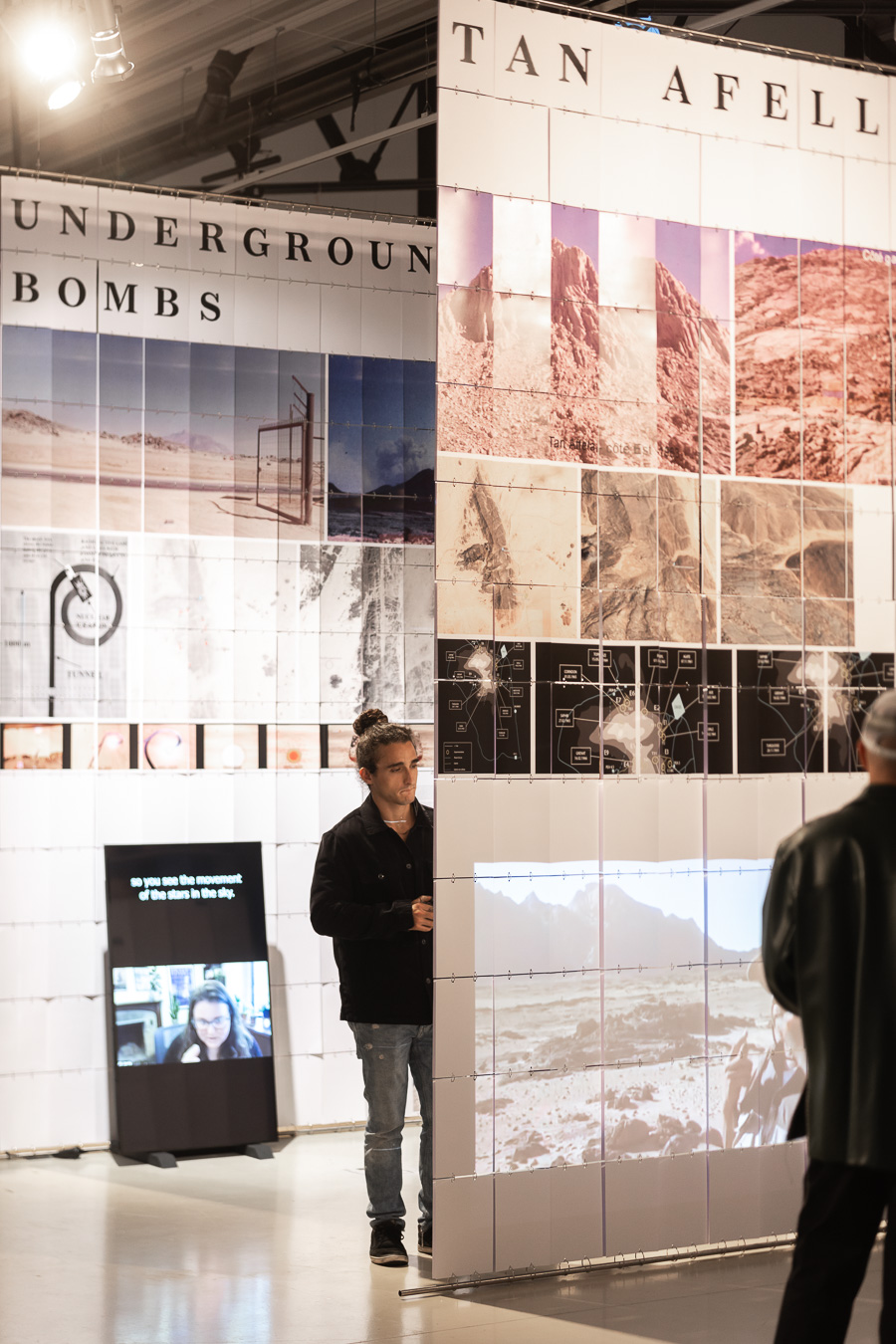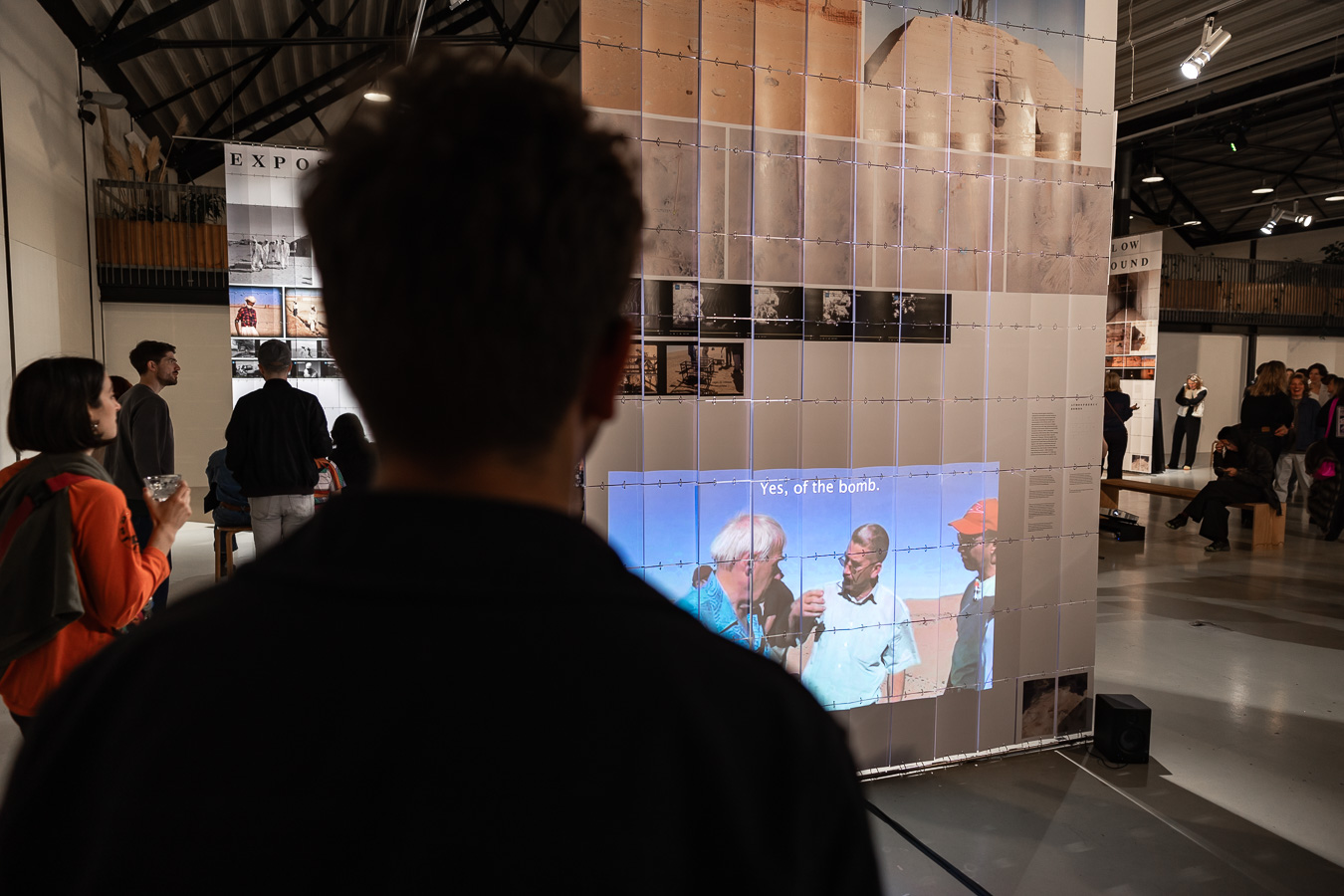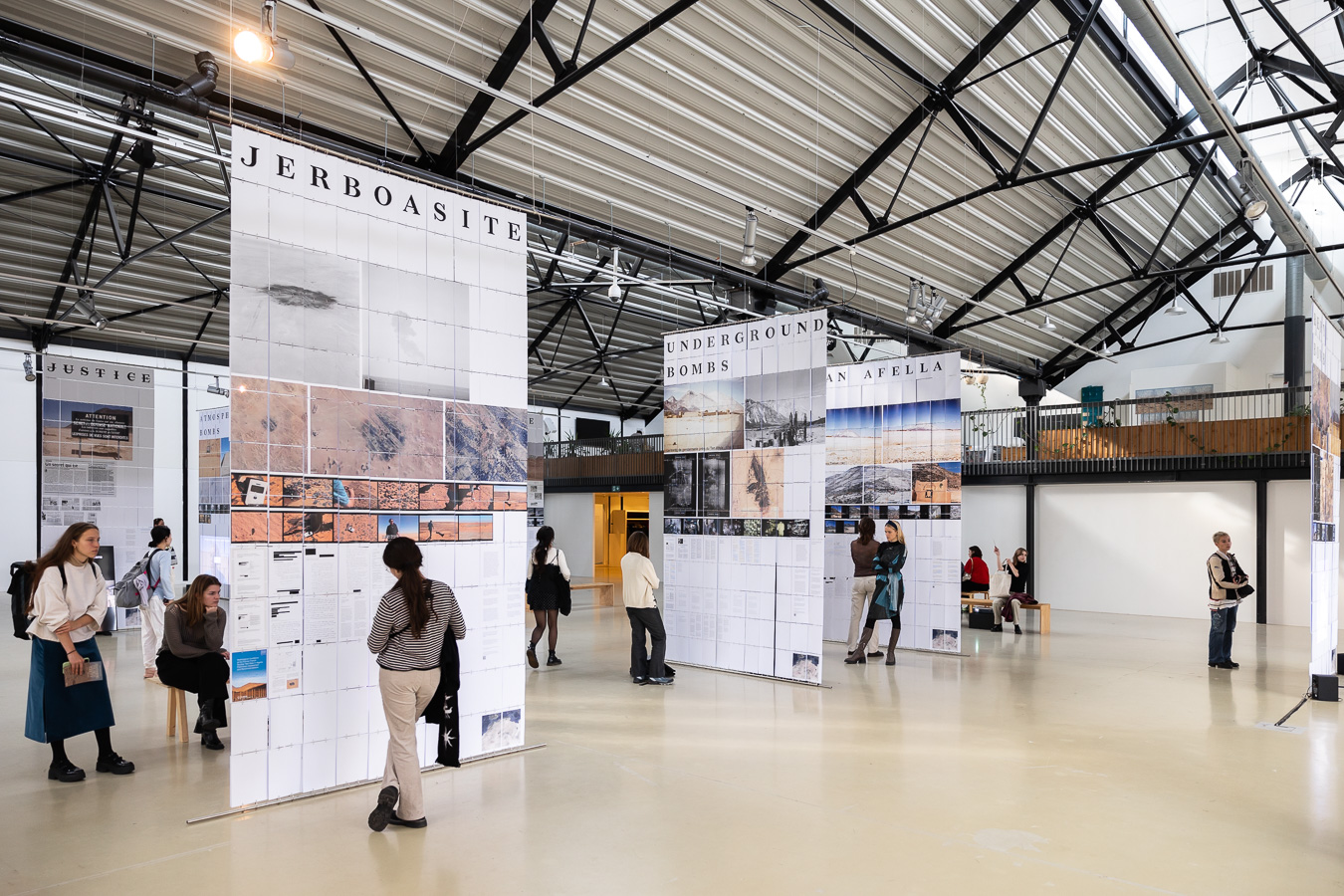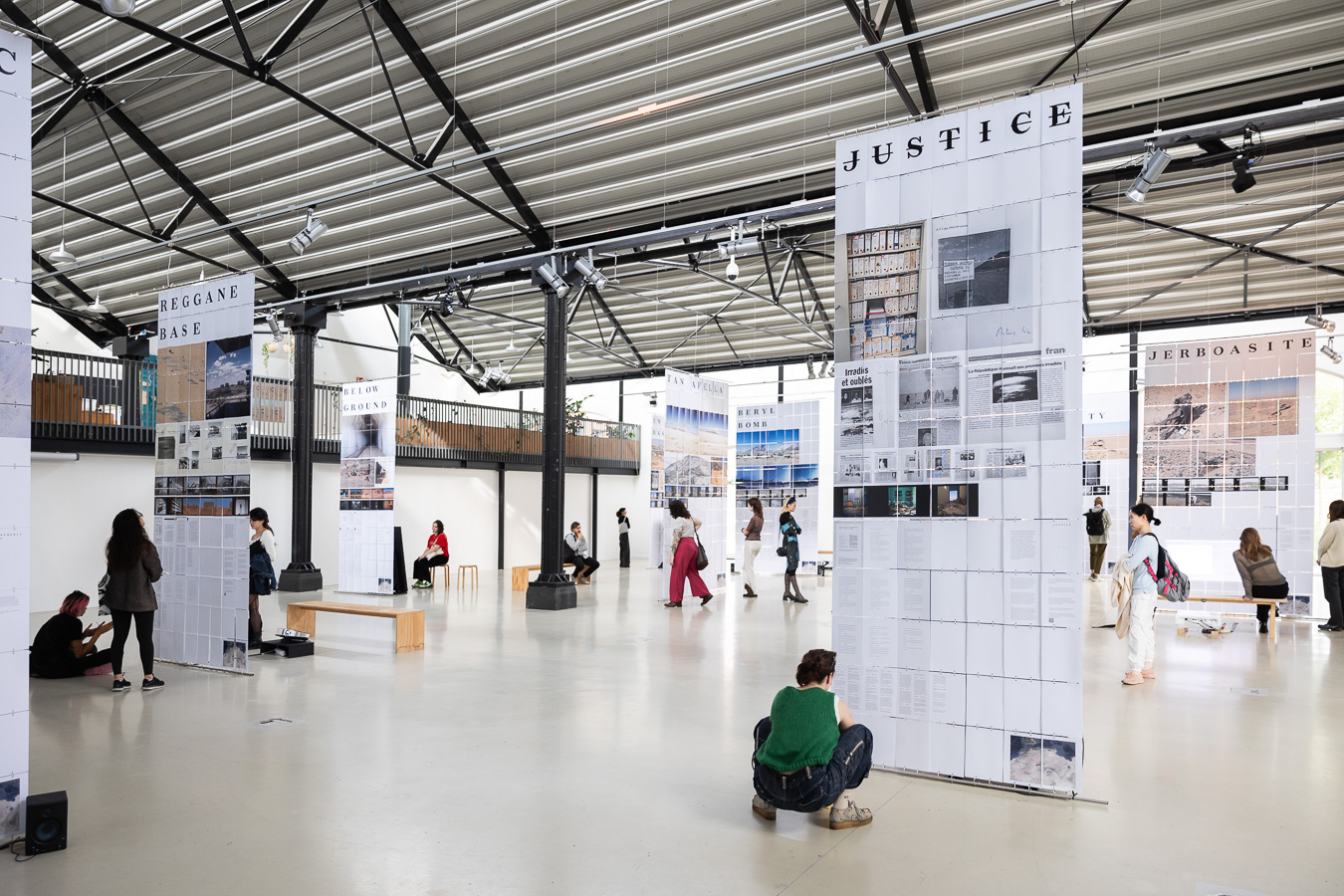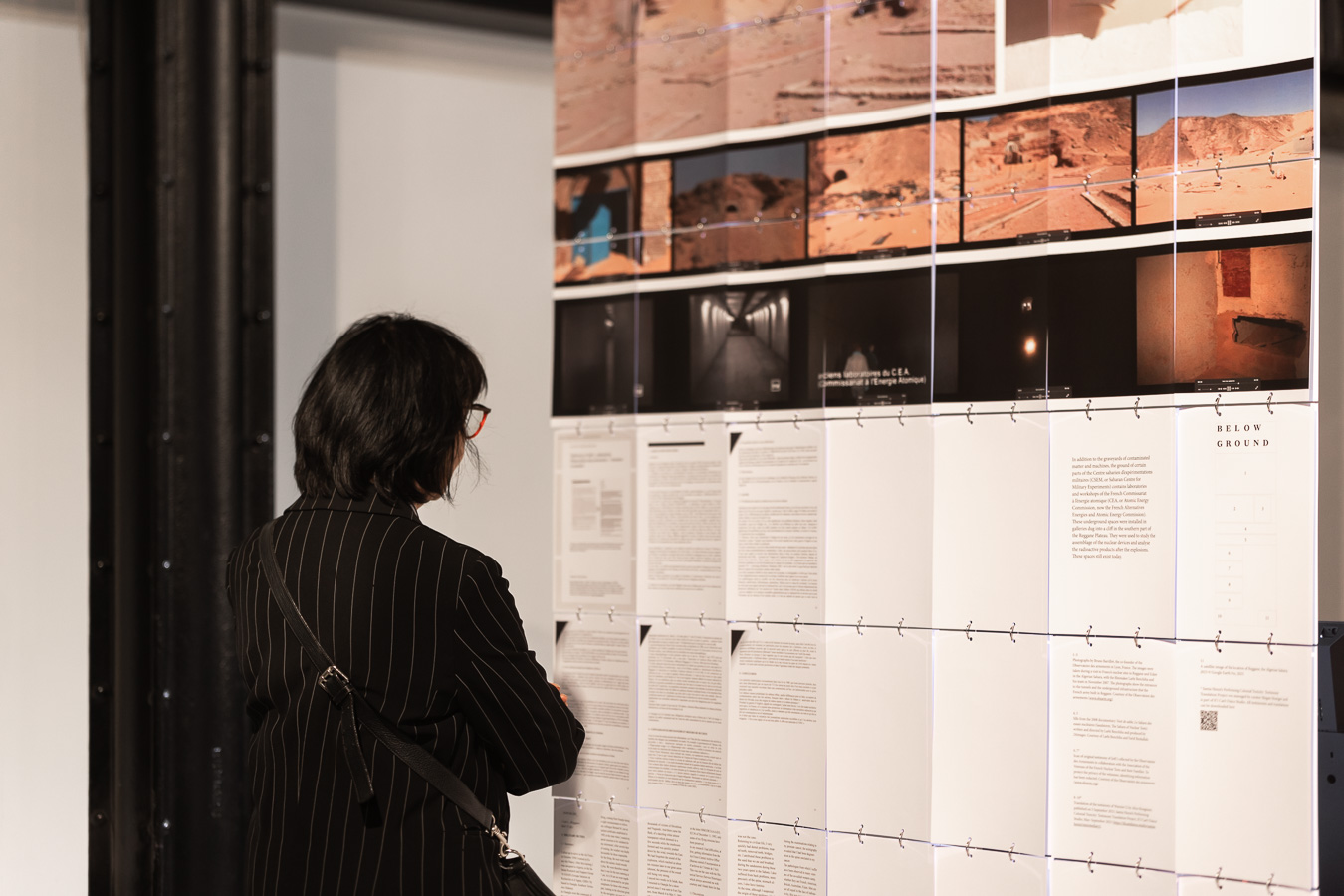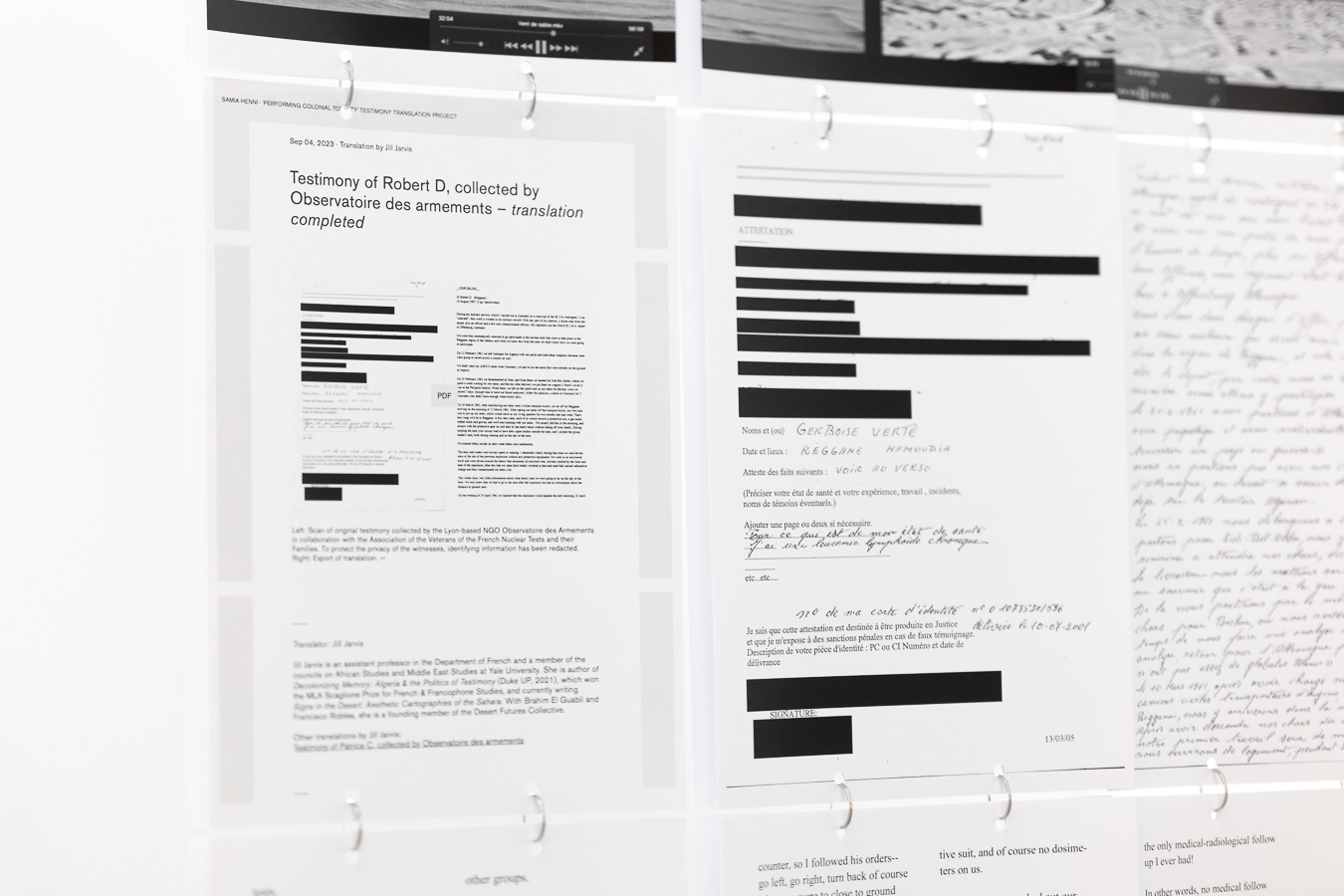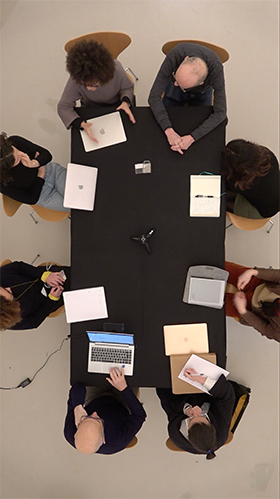
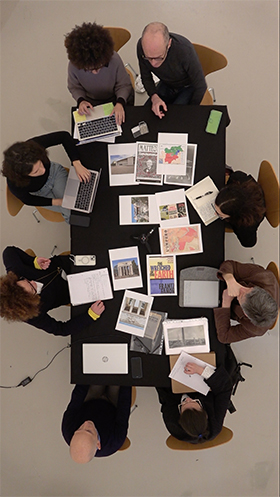
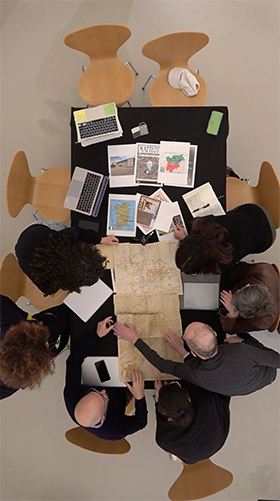
View from the top of the one of the filmed workshops, February 2025.
Psychocolonial Spaces - Act 1
By Samia Henni
2025-
Curated by Francesca Verga and Zasha Colah
Ar/Ge Kunst, Bolzano/ Bozen, Italy
24 May - 2 August 2025
Opening: May 23, 2025, 7PM
Psychocolonial Spaces - Act 1is a project conceived and implemented by Samia Henni, and commissioned by Ar/Ge Kunst, to be held in Bolzano between 24 May and 2 August 2025. The project investigates the relationships between borders, territories and inhabited spaces, and Frantz Fanon's analysis of the psychology of colonialism.
Psychocolonial Spaces - Act 1, Ar/Ge Kunst
As argued in Henni's 2024 article, entitled "On Frantz Fanon and the Manichean World" and published in Mousse, the work of the psychiatrist, political philosopher and anti-colonial activist Frantz Omar Fanon (1925-1961) played a key role in treating and theorizing the psychological and psychiatric agony of colonialism. Fanon's theories are relevant to today's colonial world order, especially in relation to the organization of states, property and space, and to the distribution of resources and capital. One of the key points of Fanon's practice was precisely his focus on (de)colonization challenges also from a psychological point of view.
The project for Ar/Ge Kunst, Psychocolonial Spaces, is the first of a series of events that may be activated in various cities and places. Act 1 sets out from the analysis of the invisible and invisibilized spaces of segregation and alienation across the territory of Bolzano and its surroundings: colonial traces, monuments and streets, places that even today have an impact on people's lives. But what comes to mind when we think of "psychocolonial" spaces? How do they affect us and how do we recognize them? How does our body absorb the violence of these spaces and how do our education, origins and attitude change the way we think about these places? What emerges when we deviate from binary systems of thought and organization?
Thinking about psychocolonial spaces can be both a "provocation" and a challenge, because naming them makes us imagine them. Associating the word "colonial" with the word "psycho" triggers a personal and psychological connection, which very often depends on the subjective experience of being in that space. In the preparatory phase of Psychocolonial Spaces: Act 1, students and professionals from the province of Bolzano were invited to reflect on what they perceive to be a "psychocolonial" space today; what are the degrees of oppression or liberation that the body undergoes in space and what are these spaces? These interlocutors contributed to the construction of the final project, which might be defined as filmic. In fact, Samia Henni constructs a film "broken down" into small parts, staging its semantic level in the (dis)assembly, and reassembling everything to form an installation that - through audio, texts, drawings and videos - offers a journey through film direction.
Participants: Alessio Giordano, Anastasia Routou, Andrea Di Michele, Angelika Burtscher, Annalisa Conti, Astrid Kofler, Beatrice Harb, Camilla Corti, Carmela Nevano, Claudia Gianella, David Calas, David Hofman, Elisa Piras, Elisabetta Rattalino, Filippo Contatore, Frida Carazzato, Gabriele Di Luca, Hannes Obermair, Hans Knapp, Jasmin Khalifi, Katherina Longariva, Martin Hanni, Martina Drechsel, Marzia Bona, Monika Verdorfer, Raffaele Virgadaula, Renato Sette, Roberto Gigliotti, Valentina Cramerotti, and Verena Perwanger.
This project is made possible with the support of the Swiss Arts Council Pro Helvetia.
Many thanks to: Mayyasah Akour, Carmine Auricchio, Ivan Bocchio, Melinda Bieri, Roberto Bors, Carlo Calderan, Elisa Cappellari, Andrea Conca, Fischli Fredi, Angelika Klammer, Waltraud Kofler-Engl, Ermira Kola, David Krawitz, Christa Ladurner, Ivana Milenkovic, Dora Musola, Bright Nnadi, Olsen Niels, Angelina Radakovic, Sylvie Riant, Stefano Riba, Anita Rossi, Pascal Schwaighofer, Luigi Scolari, Daniel Sommer, Ipek Tureli, David Theodore, Paul Videsott, Margot Wittig, and all the participants of the workshops and the making of the show.
